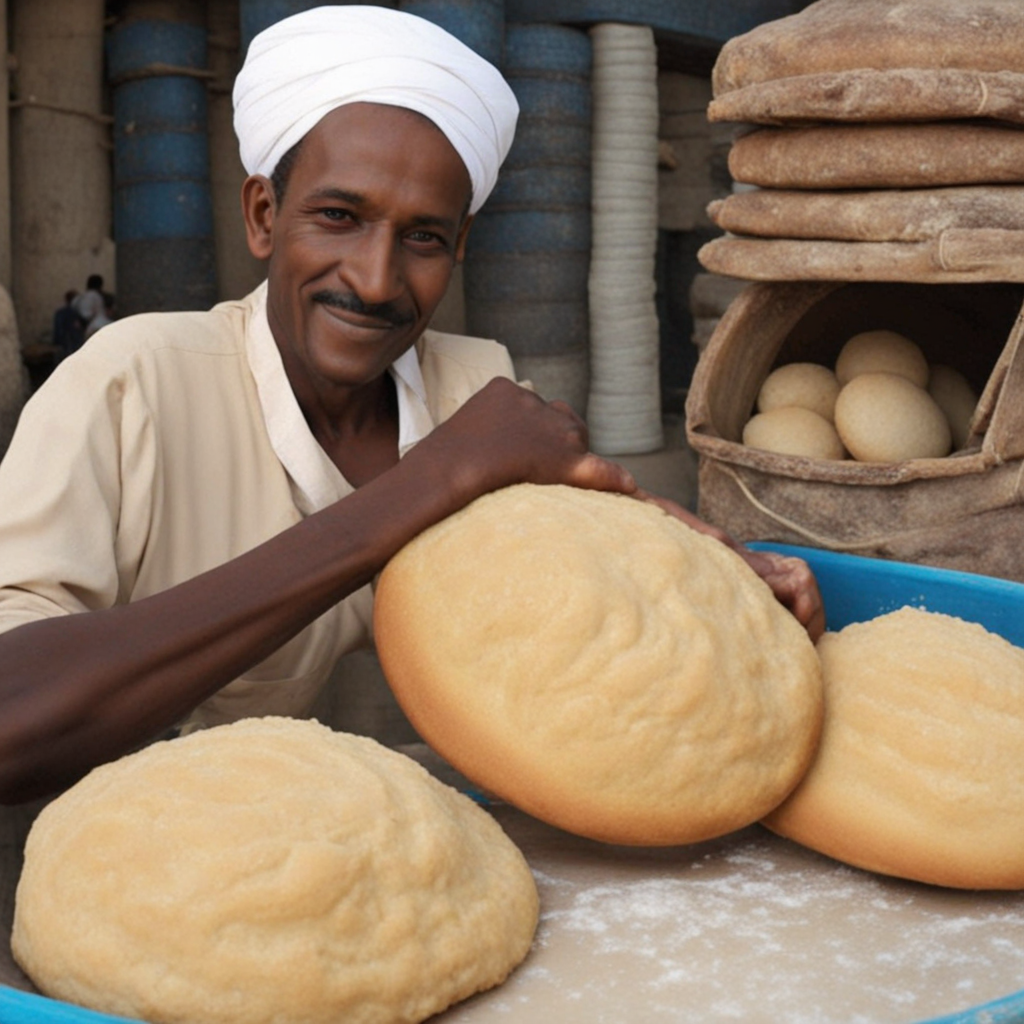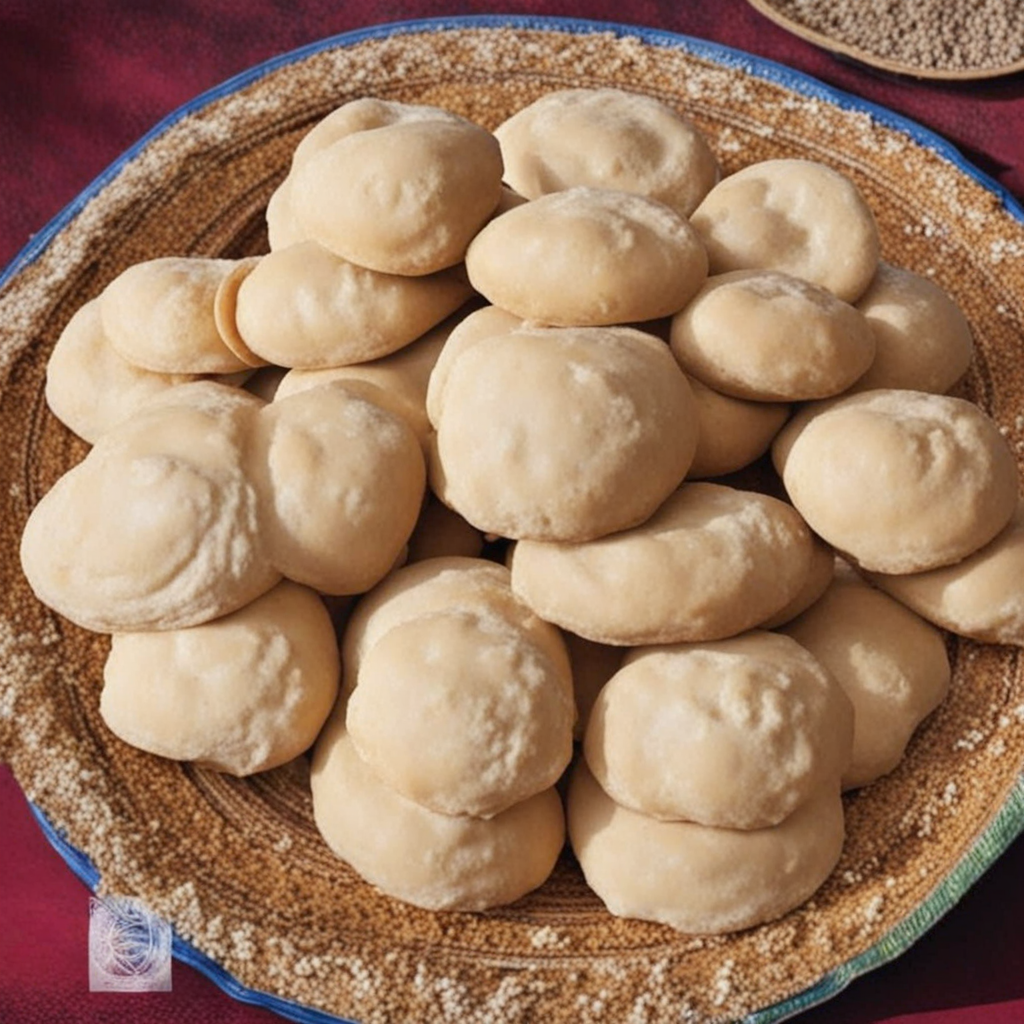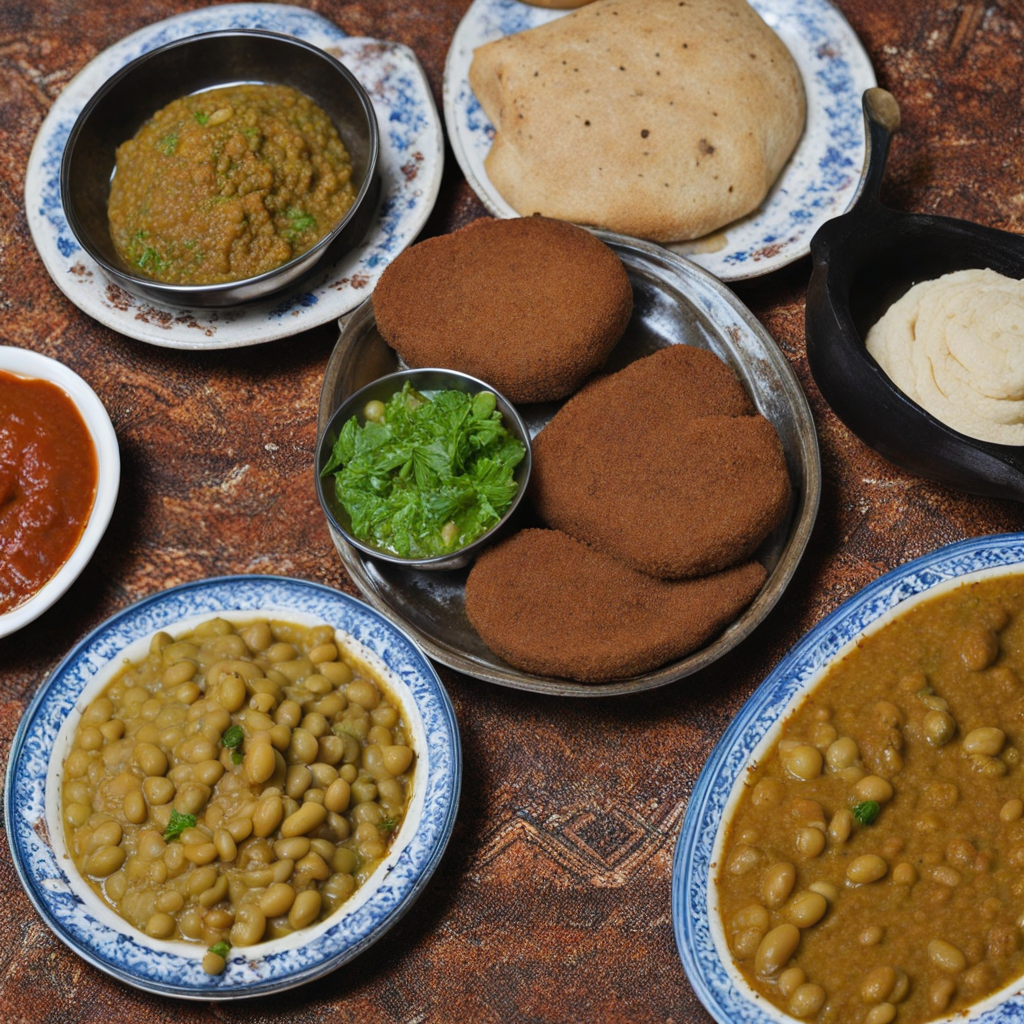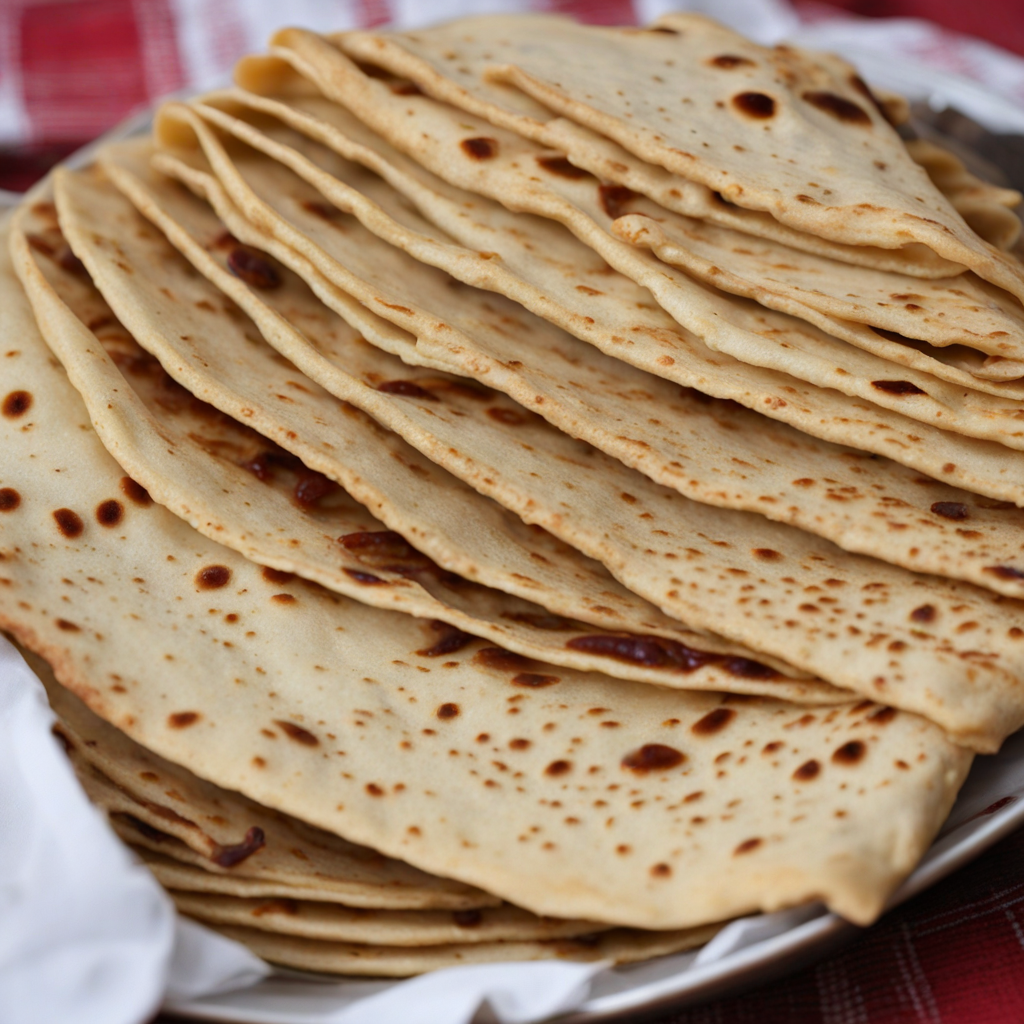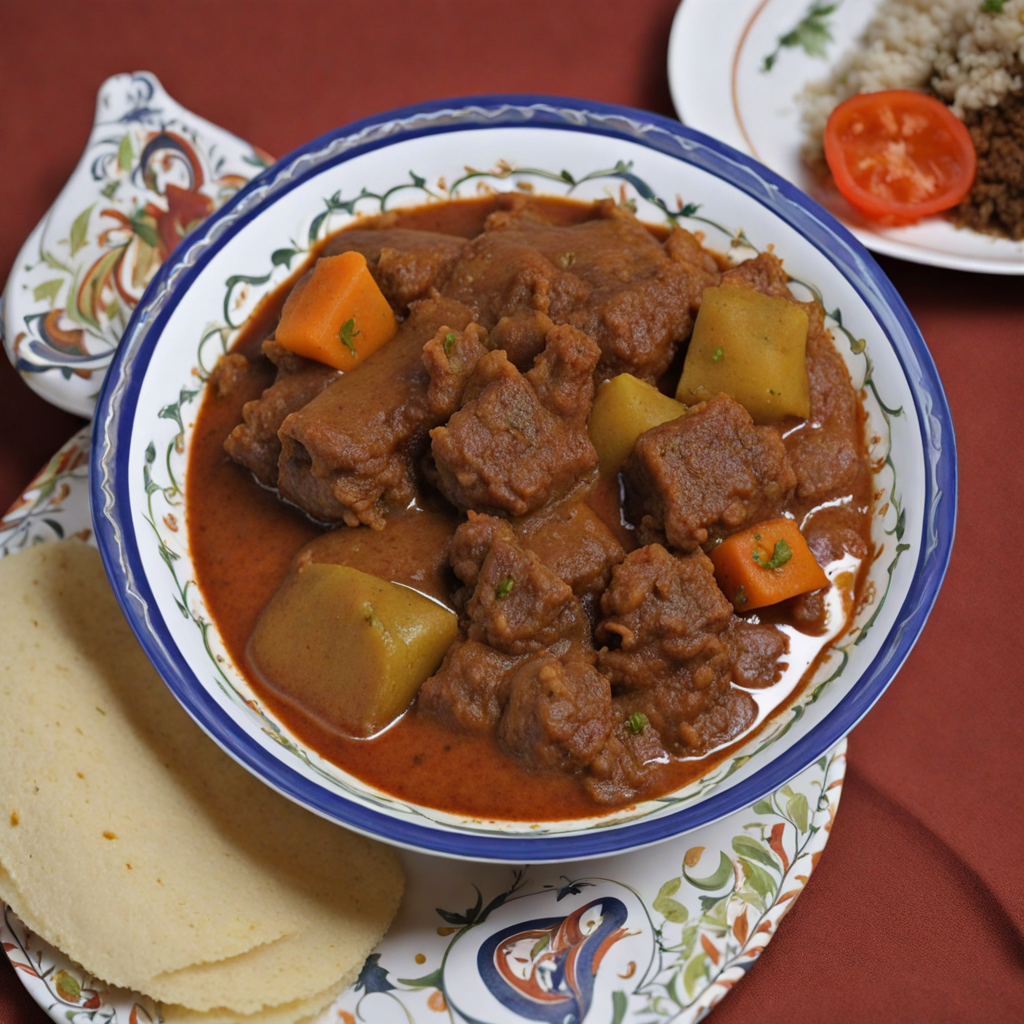Mishit
Mishit is a unique Sudanese dish that showcases the rich flavors and cultural heritage of Sudan. This hearty meal typically consists of tender pieces of meat, often lamb or beef, marinated in a blend of spices that may include cumin, coriander, and garlic. The meat is then slow-cooked to perfection, allowing the flavors to meld beautifully, resulting in a succulent dish that melts in your mouth. The use of spices not only enhances the taste but also reflects the culinary traditions of the region, making Mishit a dish that resonates with warmth and tradition. Accompanying the meat is often a side of fragrant rice or flatbread, which serves to soak up the delicious juices and spices of the dish. The rice is usually seasoned with saffron or turmeric, adding a vibrant hue and subtle flavor that complements the richness of the Mishit. Additionally, fresh vegetables or a zesty salad may be served alongside, providing a refreshing contrast that balances the meal and rounds out the dining experience. Mishit is not just a meal; it is an experience that embodies Sudanese hospitality and communal dining. Traditionally enjoyed with family and friends, the dish is often shared from a communal platter, encouraging conversation and connection. Each bite of Mishit offers a glimpse into Sudan’s diverse culinary landscape, inviting those who partake to explore the intricate flavors and textures that make this dish a true culinary gem of the region.
How It Became This Dish
The History of مشيت (Mishait) in Sudan Mishait, a traditional Sudanese dish, offers a rich tapestry of flavors and cultural significance that reflects the history and diverse culinary practices of the Sudanese people. Often characterized by its use of spices, grains, and meats, Mishait has not only nourished generations but has also become a symbol of Sudanese identity and hospitality. #### Origins of Mishait The origins of Mishait can be traced back to the early Sudanese tribes, who were primarily nomadic and depended on local resources for sustenance. Sudan’s geographical diversity, with its deserts, mountains, and fertile banks of the Nile, greatly influenced the ingredients and cooking methods of the region. Historically, the Sudanese have cultivated grains such as sorghum and millet, which are foundational to Mishait, as well as rearing livestock for meat. Mishait is believed to have evolved in the North Sudanese regions where traditional cooking methods emerged, particularly the use of clay ovens and open flames, which impart a unique flavor to the dish. The name "Mishait" itself is derived from the Arabic verb "شوى" (shawa), meaning "to grill" or "to roast," indicating the dish's primary cooking technique. The culinary practice of grilling meat, often marinated with spices, dates back thousands of years, making it a significant part of Sudanese heritage. #### Cultural Significance Mishait holds a special place in Sudanese culture, often served during communal gatherings, religious celebrations, and significant life events such as weddings and holidays. The preparation of Mishait is not just about the food; it is an opportunity for families and communities to come together, reinforcing social bonds and cultural identity. In Sudan, hospitality is a deeply ingrained value, and serving Mishait to guests is a gesture of respect and warmth. The dish is often accompanied by traditional sides such as salads, sauces, and bread, enhancing the dining experience and showcasing the variety of Sudanese cuisine. This communal aspect of Mishait reflects the larger social fabric of Sudan, where shared meals serve as a foundation for relationships and cultural continuity. #### Ingredients and Preparation At its core, Mishait typically consists of marinated meat, often lamb or chicken, which is seasoned with a blend of spices, including cumin, coriander, garlic, and chili. The marinating process can take several hours or even overnight, allowing the flavors to penetrate the meat thoroughly. The meat is then skewered and grilled over an open flame, a method that infuses it with a smoky flavor and tenderizes the texture. The grilling process is often accompanied by the aroma of spices wafting through the air, a sensory experience that draws people together. In addition to the meat, Mishait may be served with a variety of accompaniments. Flatbreads, such as kisra made from fermented sorghum, are commonly used to scoop up the meat and sauces. Various dips and salads, such as a spicy tomato salsa or a refreshing cucumber salad, complement the richness of the grilled meat, creating a balanced meal. #### Development Over Time Over the years, Mishait has undergone a transformation, influenced by globalization, migration, and the fusion of culinary practices. The Sudanese diaspora, particularly in the Middle East and Western countries, has introduced Mishait to new audiences, leading to adaptations of the original recipe. Ingredients that were once specific to Sudan are sometimes substituted with locally available ones, while traditional cooking methods are occasionally replaced by modern techniques such as grilling on electric grills or barbecues. Despite these changes, the essence of Mishait remains intact. It continues to be a dish that unites people, whether in Sudan or abroad. In recent years, there has been a resurgence of interest in traditional Sudanese cuisine, as younger generations seek to reconnect with their culinary heritage. This has led to a revival of traditional cooking methods and a greater appreciation for authentic Sudanese dishes like Mishait. Food festivals and cultural events in Sudan and among the diaspora have also played a crucial role in promoting Mishait. Chefs and home cooks alike showcase their skills and creativity, often experimenting with unique twists while honoring the core principles of the dish. Such efforts not only celebrate Sudanese gastronomy but also educate others about the rich cultural history embedded within each recipe. #### Conclusion Mishait stands as a testament to the enduring nature of Sudanese culinary heritage. Its origins rooted in ancient traditions, its cultural significance as a centerpiece of hospitality, and its evolution over time all contribute to its status as a cherished dish among Sudanese people. Whether enjoyed in a bustling market, at a family gathering, or in a distant land, Mishait encapsulates the heart and soul of Sudanese culture—a delicious reminder of the power of food to connect us across time and space. As we look to the future, Mishait will undoubtedly continue to evolve, reflecting the changing dynamics of society while remaining a symbol of Sudanese pride. Through its flavors and communal spirit, Mishait will forever hold a place at the table, inviting everyone to share in its rich history and vibrant culture.
You may like
Discover local flavors from Sudan


